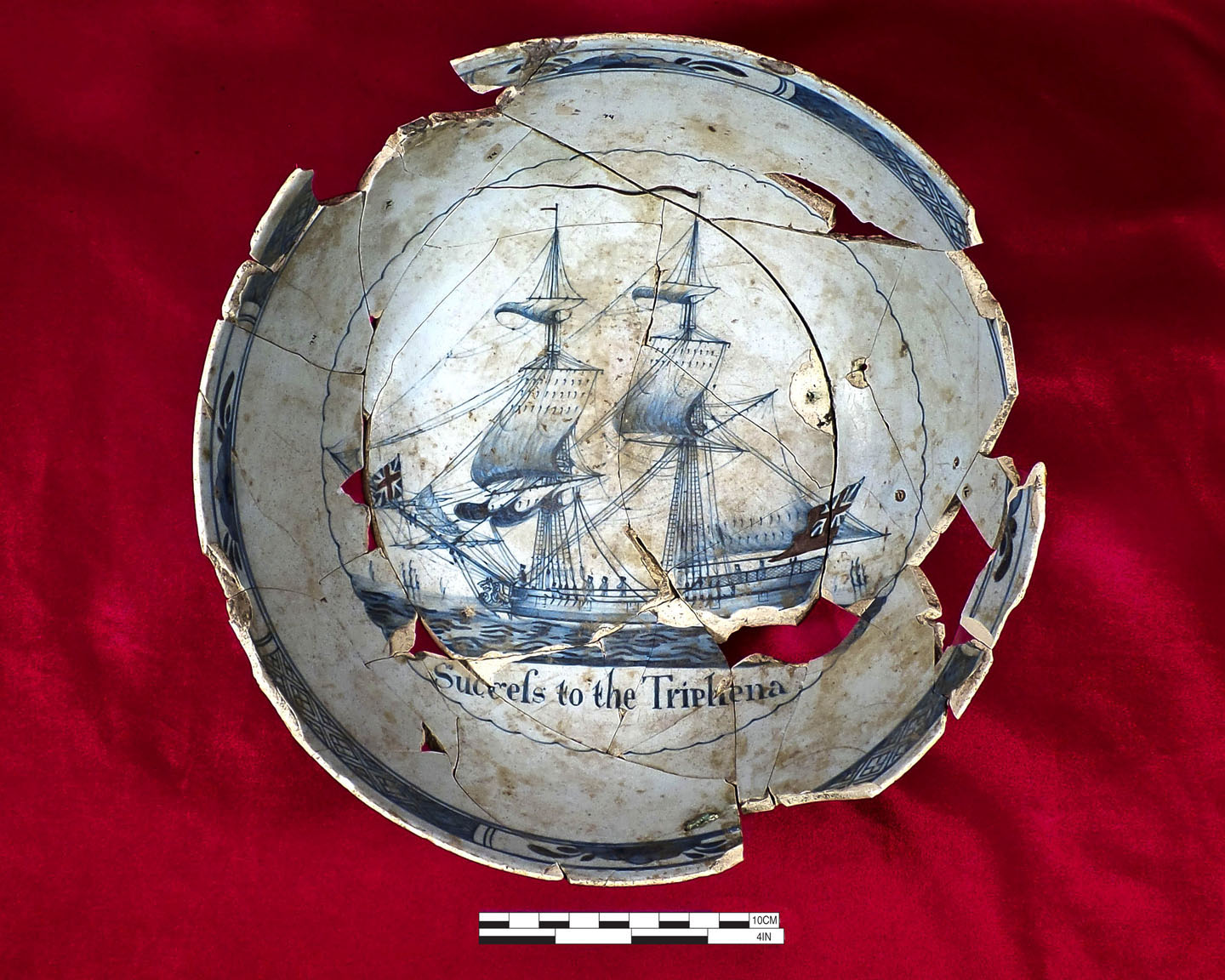ARTIFACT OF THE MONTH – OCTOBER 2015
To Artifact of the Month Index
To PAF Home
~~~ ~~~
SUCCESS TO THE TRIPHENA!

This punch bowl was found during the Spring of 2015, near the corner of Chestnut and Third Streets in Philadelphia. It was excavated from a privy (re` out house shaft) by archaeologists working for JMA, a firm specializing in historic preservation and culture resource services that has conducted many excavations in the city of Philadelphia over the years.
The privy containing the bowl was located behind the now long-disappeared house of Mary and Benjamin Humphreys who once lived on a narrow street known as Carter’s Alley. Today, the location of Carter’s Alley is part the construction zone for the new Museum of the American Revolution (scheduled to open in 2017).
The bowl measures 4” high and 9” in diameter and displays on its inside bottom surface (or ‘well’) an image of a rigged ship sailing on water. Beneath the ship image are the words, “Success to the Triphena”.
Local news accounts published in early Philadelphia provide lists of the arrivals and departures of ships at Philadelphia’s busy port. These records show that the Triphena was a merchant ship that plied the Atlantic Ocean traveling from Philadelphia to France, England, and the West Indies over a fifty-year period, from roughly 1765 to 1817.
The Triphena also played a role in the Stamp Act – an action by the British Parliament in 1756 that exacted revenue from the American colonies by imposing a stamp duty on newspapers and legal and commercial documents. This act elicited opposition from the populous in the colonies and helped encourage the revolutionary movement against the British Crown. In late 1765, the captain of the Triphena carried a notice from the merchants and traders of Philadelphia addressed to the merchants and manufacturers of Great Britain, asking them to pressure Parliament to repeal the odious act.
The archaeological evidence indicates that this bowl was thrown out around 1790. The condition of the vessel indicates that the item had also been repaired after being broken. This suggests that the bowl was possibly a treasured possession.
The bowl’s decoration signifies a toast to the ship, its owner, and/or its master. Given the composition of the bowl’s body and glaze (tin glazed earthenware), and its style of decoration (printed), archaeologists believe it was likely commissioned in the years before the Revolutionary War. They also believe it may have been manufactured in Liverpool, England. A near identical bowl is in the collection of the National Maritime Museum in Greenwich, England.
This Philadelphia archaeological discovery is currently being restored. It will be on display in the new Museum of the American Revolution which will soon stand on the site where the bowl was found.
____
Information for this ‘Artifact of the Month’ was submitted by Juliette Gerhardt of JMA, a CCRG Company. The bowl image is courtesy of JMA, a CCRG Company, and the Museum of the American Revolution. 10/1/2015
by admin